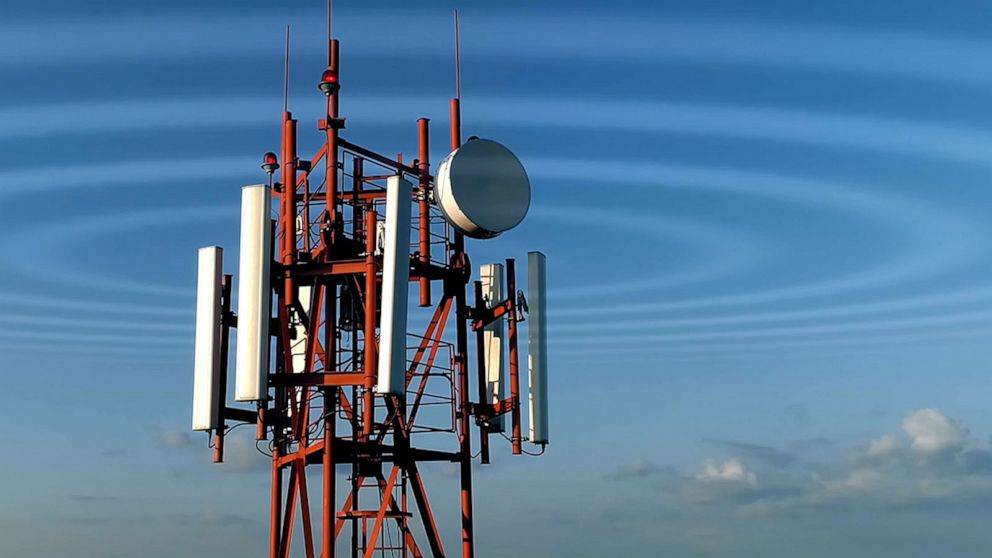If you've ever been through a town you might have noticed tiny cell towers for 5G on street light poles. They appear like tiny boxes, but they're actually broadcasting wireless signals from cell phone providers to your phone.
They are replacing the larger specially-designed cell towers. While safe distance from cell tower 're not as noticeable however, they could cause issues for users.
It is the Federal Communications Commission's Radiation Exposure Thresholds
The FCC's Radiation Exposure Thresholds determine the safe limit at which one can expose to electromagnetic energy generated by wireless devices. The exposure limits are based upon scientific research that prove that electromagnetic energy can be harmful to human health.
The specific absorption rate (SAR) is an indicator of the radiofrequency energy absorbed by tissue. It is typically 1.6 Watts per kilogram averaged over one gram of tissue.
Since 5g is able to transmit at higher frequencies this could be able to cause greater energy intensity on the skin and other exposed body areas. This could result in a wide range of possible harms, like the appearance of skin conditions like dermatitis, cataracts and skin cancer.

Due to the possible negative effects of 5G radiation, PSU has chosen to create a general power density limit of 4 mW/cm2 measured over 1 cm2, and never exceeding 30 minutes for the entire 5G spectrum at 3000 GHz. This localized limit is in accordance with the peak SAR that is spatially averaged at 1.6 W/kg averaged over 1 5 grams of body tissue, at 6 GHz.
The FCC's Maximum Exposure Thresholds for Maximum Exposure
If you've ever used a mobile phone, you're probably aware that the safest distance from the tower is at least 400 meters away. This is because the transmitting power of a cell tower increases dramatically the further away you are from it.
While this sounds like an ideal idea, the reality is that those living close to towers might be more vulnerable to health issues. For instance, a 2014 study in India discovered that those living within 50 meters from cell towers suffered much more health problems than those who were far from antennas.
However, this study also found that people who moved into areas farther away from the cell towers saw their symptoms return to normal within a few days. Other studies have shown that exposure to high levels of radiofrequency electromagnetic fields (EMFs) can cause brain tumors, cancers, and other health problems.
This is due to the fact that radiofrequency radiation, which is utilized in wireless communication, can be absorbed by the body's outer layer, the skin. This is important to understand since the skin serves as a shield against injuries caused by mechanical forces, infections by pathogenic microorganisms, and infiltration of toxic substances. It is also the biggest organ in the human body, and is responsible for keeping the integrity of the other organs.
The FCC's Minimum Exposure Thresholds for the Minimum Exposure
The FCC's Minimum Exposure Thresholds rely on several assumptions that are not supported by scientific research. These include the erroneous assumption that exposures to RF radiation are safe because of the minimal radiation penetration in the human body (i.e., tissue heating).
The assumption also ignores the more extensive penetration of ELF components of modulated RF signals, as well as the effect of brief bursts of heat from pulsed RF waves. These theories are not compatible with current knowledge of the biological effects of RF radiation. Therefore, they should not be used for health protective exposure standards.
Furthermore to what is a safe distance from a cell tower , ICNIRP and FCC limit their limit of exposure to the local SARs that are based on the maximum frequency of absorption (psSAR) which is not a sufficient dosimetric tool for determining the level of exposure to RF radiation. Particularly it is inconclusive for frequencies above 6 GHz. Furthermore, psSAR has not been tested for RF radiation that is exposed to other environmental agents such as sunlight. The interactions of RF radiation with other agents in the environment could cause synergistic or antagonistic impacts. This could result in an increased risk of negative health adverse effects. For example, co-exposure to RF radiation with sunlight may increase the risk of developing skin cancer, and may also exacerbate other skin diseases such as acne.
